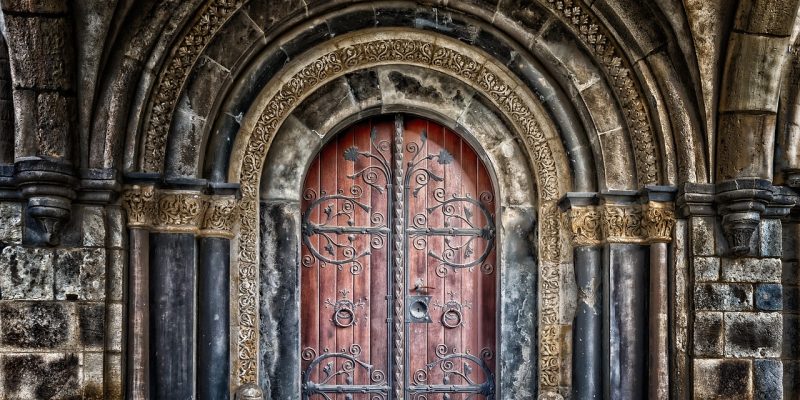Step into the captivating realm of ancient mysteries and unsolved archaeological discoveries that have confounded experts and historians throughout the ages. These enigmatic findings offer a tantalizing glimpse into the past, igniting our curiosity and sparking endless speculation. From mythical cities lost beneath the sea to intricate stone sculptures shrouded in mystery, each discovery presents a puzzle waiting to be solved.
Embark on a journey through time as we delve into the top 10 mysterious and unsolved archaeological discoveries that have left the world in awe. From the legendary tale of Atlantis and the perplexing Nazca Lines in Peru to the ancient Greek Antikythera Mechanism and the enigmatic Voynich Manuscript, we will explore the secrets and theories surrounding these captivating artifacts.
Uncover the truth behind the Stone Spheres of Costa Rica and their purpose, as well as the riddles surrounding the Great Sphinx of Giza and the potential hidden chambers beneath its colossal structure. Journey to Easter Island and unravel the mysteries of the Moai statues, pondering their construction and transportation. Delve into the fascinating discovery of the Terracotta Army in China, an intricate collection of clay soldiers guarding the tomb of Emperor Qin Shi Huang. And finally, we will unravel the mysteries of Stonehenge, the ancient stone circle in England, and the ongoing debate surrounding its purpose and construction techniques.
Prepare to be captivated by these unsolved archaeological discoveries, as we delve into the depths of history and seek to unravel the secrets that have eluded us for centuries. Join us on this thrilling adventure as we explore the unknown and embrace the wonder of the past.
The Lost City of Atlantis
The Lost City of Atlantis is a captivating legend that has fascinated people for centuries. According to ancient Greek philosopher Plato, Atlantis was a powerful and advanced civilization that existed thousands of years ago. It was said to be a utopian city, rich in resources and technology. However, the city’s prosperity was short-lived as it mysteriously disappeared, sinking beneath the sea in a single day and night.
Despite its mythical status, the search for Atlantis continues to this day. Many theories and speculations have emerged, with some suggesting that Atlantis was a real place while others believe it to be purely a myth. Archaeologists, historians, and explorers have embarked on numerous expeditions in search of this elusive city, hoping to uncover evidence of its existence.
The Nazca Lines
Unravel the mystery behind the massive geoglyphs etched into the Nazca Desert in Peru, known as the Nazca Lines. These ancient geoglyphs are enormous designs and patterns created by removing the reddish-brown iron oxide-coated pebbles that cover the desert floor, revealing the lighter-colored earth beneath. The Nazca Lines are famous for their intricate and precise designs, including animals, plants, and geometric shapes that can only be fully appreciated from the air.
The purpose behind the creation of the Nazca Lines has puzzled experts for centuries. One theory suggests that they were used for astronomical purposes, serving as an astronomical calendar or an observatory. Others believe that the lines were part of religious or spiritual rituals, with the patterns representing sacred symbols or deities. Some even speculate that the Nazca Lines were created as a way to communicate with extraterrestrial beings, as the designs can only be fully appreciated from above, leading to theories of ancient alien involvement.
Despite numerous theories, the true purpose and method of creating the Nazca Lines remain uncertain. Theories surrounding their creation range from simple techniques such as using ropes and stakes to more complex methods involving the use of hot air balloons or even extraterrestrial assistance. The mystery and intrigue surrounding the Nazca Lines continue to captivate the imagination of both experts and visitors alike, making it one of the most enigmatic archaeological discoveries in the world.
The Voynich Manuscript
The Voynich Manuscript is a fascinating and perplexing artifact that has puzzled researchers for centuries. This illustrated codex, believed to have been created in the 15th century, is filled with an unknown script and intricate drawings of plants, astronomical diagrams, and mysterious figures. Despite numerous attempts, the meaning and purpose of the manuscript remain a mystery.
Researchers from various fields, including linguistics and cryptography, have dedicated countless hours to deciphering the Voynich Manuscript. However, the complex and unique nature of the script has proven to be a formidable challenge. The characters in the manuscript do not resemble any known language, and the grammar and syntax are unlike anything seen before.
One of the most intriguing aspects of the Voynich Manuscript is its illustrations. The detailed drawings of plants, some of which are unidentifiable, have sparked speculation about the manuscript’s origins and purpose. Some theories suggest that the manuscript may contain hidden knowledge about herbal medicine or alchemy, while others propose that it may be a work of fiction or even an elaborate hoax.
Despite the mysteries surrounding the Voynich Manuscript, researchers continue to explore new avenues in their quest for answers. Advances in technology, such as high-resolution imaging and computational analysis, have provided new tools for studying the manuscript. With each new discovery and breakthrough, the enigma of the Voynich Manuscript becomes all the more intriguing.
The Antikythera Mechanism
The Antikythera Mechanism is a fascinating archaeological discovery that has perplexed scholars with its advanced astronomical functions. This ancient Greek device, believed to have been created around 100 BCE, is considered one of the most complex mechanisms of its time. It was found in 1901 in the wreckage of a Roman ship near the island of Antikythera in Greece.
The Antikythera Mechanism consists of a series of gears and dials, and it was designed to track the movements of celestial bodies, including the sun, moon, and planets. It also predicted eclipses and displayed the dates of important religious festivals. This level of astronomical knowledge and precision was far ahead of its time and has astounded experts.
The Baghdad Battery
The Baghdad Battery is a fascinating artifact that has puzzled experts for years. It consists of a clay jar, a copper cylinder, and an iron rod. When these components are assembled, it resembles a simple battery. The discovery of this ancient device has raised many questions about its purpose and the technology of the time.
Some theories suggest that the Baghdad Battery was used for electroplating, a process that involves coating objects with a thin layer of metal. Others believe that it may have been used for religious or ceremonial purposes. Despite the various speculations, the true function of the Baghdad Battery remains a mystery.
The Stone Spheres of Costa Rica
Let’s delve into the intriguing mystery of the stone spheres found in Costa Rica. These enigmatic stone spheres have fascinated archaeologists and researchers for decades, leaving them puzzled about their purpose and origin. These perfectly round and smooth spheres range in size from a few centimeters to over two meters in diameter, and they are scattered throughout the Diquis Delta region of Costa Rica.
The purpose of these stone spheres remains a subject of debate among experts. Some theories suggest that they were used as symbols of power or status, while others propose that they served as astronomical or navigational tools. Additionally, some researchers believe that the spheres were used in religious or ceremonial rituals. Their precise creation technique is also a mystery, as it is unclear how ancient civilizations were able to achieve such remarkable precision without the use of modern tools.
Despite numerous hypotheses, the true purpose and significance of the stone spheres of Costa Rica continue to elude us. These ancient artifacts stand as a testament to the advanced skills and ingenuity of the civilizations that once thrived in this region. As we continue to investigate and uncover more information, we hope to unravel the secrets behind these intriguing stone spheres and gain a deeper understanding of the ancient cultures that created them.
The Great Sphinx of Giza
The Great Sphinx of Giza is one of the most iconic and enigmatic structures in the world. This massive limestone statue, located on the Giza Plateau in Egypt, has captivated the imagination of people for centuries. Standing at over 66 feet tall and 240 feet long, the Sphinx is believed to have been built during the reign of Pharaoh Khafre in the 4th dynasty of ancient Egypt.
One of the biggest mysteries surrounding the Great Sphinx is its origins. While it is widely accepted that the statue represents the likeness of Pharaoh Khafre, there is still debate among experts about who exactly built the Sphinx and when. Some theories suggest that it predates Khafre and was actually built by an earlier civilization, while others argue that it was constructed by Khafre’s workers as a symbol of his power and authority.
Another intriguing aspect of the Great Sphinx is the possibility of hidden chambers and tunnels beneath its structure. Throughout history, there have been numerous claims and speculations about secret passages leading to undiscovered chambers or even the fabled Hall of Records. These theories have sparked the imaginations of treasure hunters and archaeologists alike, leading to various attempts to explore the depths of the Sphinx.
The Easter Island Moai
The Easter Island Moai statues are one of the most fascinating and mysterious archaeological discoveries in the world. These massive stone figures, known as Moai, are scattered across the remote Easter Island, also known as Rapa Nui. The Moai are renowned for their colossal size, with some reaching heights of up to 33 feet and weighing several tons. The sheer scale of these statues is awe-inspiring and raises numerous questions about how they were constructed and transported.
One of the prevailing theories behind the construction of the Moai is that they were carved from the volcanic rock of the island’s Rano Raraku quarry. The statues were meticulously carved using stone tools, and it is believed that they were then transported to various locations around the island using a combination of sledges, ropes, and manpower. The process of moving these enormous statues across rough terrain and up steep slopes remains a remarkable feat of engineering and ingenuity.
Another intriguing aspect of the Easter Island Moai is the mystery surrounding their purpose. While it is widely accepted that the statues represent ancestors or important figures in the Rapa Nui culture, the exact reason for their creation and placement is still a subject of debate. Some theories suggest that the Moai were erected to honor deceased chiefs or to demonstrate the power and prestige of certain clans. Others propose that they served as a means of communication with the gods or were part of religious rituals.
The Easter Island Moai continue to captivate researchers and visitors alike, offering a glimpse into the ancient civilization that once thrived on this remote island. Their colossal size, intricate carvings, and the mysteries surrounding their construction and purpose make them an enduring enigma that sparks curiosity and wonder.
The Terracotta Army
The Terracotta Army is a captivating archaeological find in China that has astounded experts and visitors alike. Discovered in 1974 near the city of Xi’an, this intricate collection of life-sized clay soldiers is believed to have been created to guard the tomb of Emperor Qin Shi Huang, the first emperor of China. The army consists of thousands of individually crafted soldiers, each with unique facial features and hairstyles.
This awe-inspiring army is a testament to the incredible craftsmanship and attention to detail of the ancient Chinese artisans. The soldiers are arranged in battle formation, with different ranks and positions, including infantry, cavalry, and archers. The level of realism in their appearance is truly remarkable, with each soldier having distinct facial expressions and even fingernails.
The discovery of the Terracotta Army has provided invaluable insights into the military and artistic practices of ancient China. It has also raised numerous questions about the tomb itself, which remains largely unexplored. The tomb is believed to be a vast underground complex, with rivers of mercury and other intricate structures. The excavation of the tomb is a complex and ongoing process, as experts strive to preserve the delicate clay soldiers while uncovering the secrets of this ancient wonder.
The Stonehenge Mystery
The Stonehenge Mystery takes us on a journey to uncover the secrets of one of the most famous and enigmatic archaeological sites in the world. Located in England, Stonehenge is a prehistoric monument consisting of massive standing stones arranged in a circular pattern. But what is the purpose of this ancient structure? How was it constructed? These questions have puzzled experts and sparked endless debates.
One of the main mysteries surrounding Stonehenge is its purpose. While many theories exist, ranging from religious rituals to astronomical observations, the true intention behind its construction remains elusive. Some believe it served as a burial ground, while others suggest it was a place for healing or even a celestial calendar. The ongoing debate continues to captivate the minds of historians, archaeologists, and enthusiasts alike.
Another intriguing aspect of Stonehenge is its construction techniques. How did the ancient people manage to transport and erect these massive stones, some weighing up to 25 tons? Theories range from the use of sledges and ramps to the possibility of a more complex system involving ropes and pulleys. The sheer size and precision of the stones raise questions about the advanced engineering skills possessed by the builders.
Despite the mysteries and unanswered questions, Stonehenge remains a testament to the ingenuity and creativity of our ancient ancestors. It stands as a reminder of the rich and complex history of human civilization. As we continue to explore and study this remarkable site, we hope to unravel more of its secrets and gain a deeper understanding of our past.
Frequently Asked Questions
- What is the Lost City of Atlantis?
The Lost City of Atlantis is a legendary city that is said to have disappeared beneath the sea. It has captivated the imagination of people for centuries, but its existence remains a mystery.
- What are the Nazca Lines?
The Nazca Lines are massive geoglyphs etched into the Nazca Desert in Peru. They are believed to have been created by the ancient Nazca civilization, but their purpose and the methods used to create them are still debated by experts.
- What is the Voynich Manuscript?
The Voynich Manuscript is an enigmatic codex filled with an unknown script and drawings. It has puzzled researchers for years, as its meaning and origin remain unknown. Many have tried to decipher its contents, but it remains a mystery.
- What is the Antikythera Mechanism?
The Antikythera Mechanism is an ancient Greek device that was discovered in a shipwreck. It is considered to be one of the most important archaeological finds, as it is believed to be an early analog computer with advanced astronomical functions.
- What is the Baghdad Battery?
The Baghdad Battery is a perplexing artifact that resembles a battery. It was discovered in Iraq and raises questions about its purpose and the technology of the ancient civilizations. Its true function is still a subject of debate.
- What are the Stone Spheres of Costa Rica?
The Stone Spheres of Costa Rica are mysterious stone spheres found in the country. Their purpose and the methods used to create them are still unknown. Various theories suggest they may have had ceremonial or astronomical significance.
- What is the Great Sphinx of Giza?
The Great Sphinx of Giza is a monumental statue with the head of a human and the body of a lion. It is located in Egypt and has long been a subject of fascination. The origins of the Sphinx and the hidden chambers beneath it continue to intrigue researchers.
- What are the Easter Island Moai?
The Easter Island Moai are colossal stone statues found on Easter Island. These statues are known for their impressive size and the mystery surrounding their construction and transportation. Various theories suggest they were created to honor ancestors or deities.
- What is the Terracotta Army?
The Terracotta Army is a collection of life-sized clay soldiers discovered in China. These statues were created to guard the tomb of Emperor Qin Shi Huang. The intricate details and vast number of statues make this archaeological find truly remarkable.
- What is the mystery of Stonehenge?
Stonehenge is an ancient stone circle located in England. Its purpose and the techniques used to construct it have long been debated. Theories range from it being a burial site to an astronomical observatory, but the true purpose of Stonehenge remains unknown.









